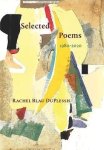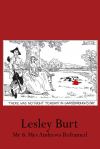
Rachel Blau DuPlessis is an intriguing poet (including collaged visual poems) and critic. Her Selected Poems can’t help but feel centred around, perhaps grounded by, her Drafts project: 114 (+) cantos which rework, or ‘fold’, 19 poems six times over, riffing and refining, tangenting away from and interrogating the texts themselves and the author’s processes and poetical understanding. The sequence is both a challenge to and a critical deconstruction of some of the very male modernist long poems of sequences such as Pound’s Cantos and Olson’s Maximus project; and the long poem is also the subject of a recent critical volume.
There are under a 100 pages of poetry preceding Drafts in this Selected Poems, mostly fragmented lyrics, perhaps most akin to the work of, say, Rae Armantrout. The last line of the very first poem included here, 1970’s ‘A Poem to Myself’, acts as a kind of manifesto or flagging up of what is to follow: ‘Come in, come in, I say to all the fragments.’ Perhaps the most intriguing early piece here is ‘”Writing” from Tabula Rasa’, which is immediately followed by ‘Writing on “Writing”‘, which – in part – explores ‘Marginalization’, and the author’s desire to understand it but also create a form and writing that facilitates it:
Setting the poem so there is a bringing of marginalization into writing.
‘No center’ of a section alternates with small contained sections.
Sections contained by other sections, over writing, writing over, or
simultaneous with. So that one section does not have hegemony. So
the reader does not know which to read first, or how to inter-read.
Drafts, which follows, in some ways contradict this: the individual poems/cantos are numbered and presented in order, although of course they have previously been published individually, and the reader can also follow a poem through its ‘folded’ reversions using the included grid, which acts as a visual index.
The actual selection of poems from Drafts is intriguing, mostly presenting self-aware texts that explore a number of ways of writing about itself: redaction, a conversation on the page, and various declamations:
I want polyphony
I want excess
I want no art object
[…]
I want the wayward and unpredictable
caused by anything
(‘Draft 85: Hard Copy 15’)
Trample the vanity of the poem!
(‘Draft 107: Meant to say’)
This, however, is coupled with an awareness of the impossibility of weaving everything (or indeed, perhaps, anything) together, with the same poem going on to note that:
[…] ; it is your archive as well as mine, this little
piece of nothing, this
part of the imaginary whole.
The selection of DuPlessis’ work concludes with excerpts from a pair of stand-alone ‘book-length collage poems’, which build upon two collaged texts in Drafts, and from an ongoing ‘serial poem’ Traces, with Days. As yet, although I have several volumes from this project, it hasn’t drawn me in in the way Drafts did and continues to do so. It will be interesting to see how it develops.
Hand-in-hand with the writing’s own self-evidenced poetics is the more academic approach of A Long Essay on the Long Poem, which explores some of the ideas mentioned above, particularly how to include everything, but also how to shape a poem, and indeed how to end it. DuPlessis notes that ‘Long poems may certainly be self-contradictory and oscillatory, dialogic’, here using the shift from ‘epic-polemic episodes’ to ‘lyric quest’ between books two and three of Olson’s Maximus as an example. The desire for inclusion is usefully explained as ‘Long poems become magnetic fields of ongoing events and materials in their discourses and commentaries, not isolated items or singular insights.’
Once an author accepts and embraces the notion of polyphony, inclusion, digression and segmentivity, they are able to – notes DuPlessis – invent or adopt a bewildering number of writing strategies. They can reinvent the quest or epic; they can write back to canonical works, reversioning and implicitly or explicitly critiquing and questioning; they can embed their work in a field of quotations (Pound) or paraphrase; they can adopt postmodern slippage, fragmentation and lexical or grammatical subversion or disruption (Ashbery); they can use appropriation and collage. DuPlessis also discusses ‘Confronting gender’ with varied examples of texts and statements from authors such as Alice Notley, Anne Waldman and H.D.; as well as considering subjects such as cognition, truth, conspiracy, numerology, and theology.
She is of course constantly aware that ‘A long poem may develop by rethinking its strategies and rationales as it is written.’ And if I am somewhat disappointed by the concluding paragraph of the book, which suggests not only that ‘the author becomes possessed by language’ but that ‘The poem finally chooses you’, A Long Essay is a thought-provoking and illuminating exploration of its subject, one that neither this brief review nor a single read can do justice to.
Rupert Loydell 19th July 2023


